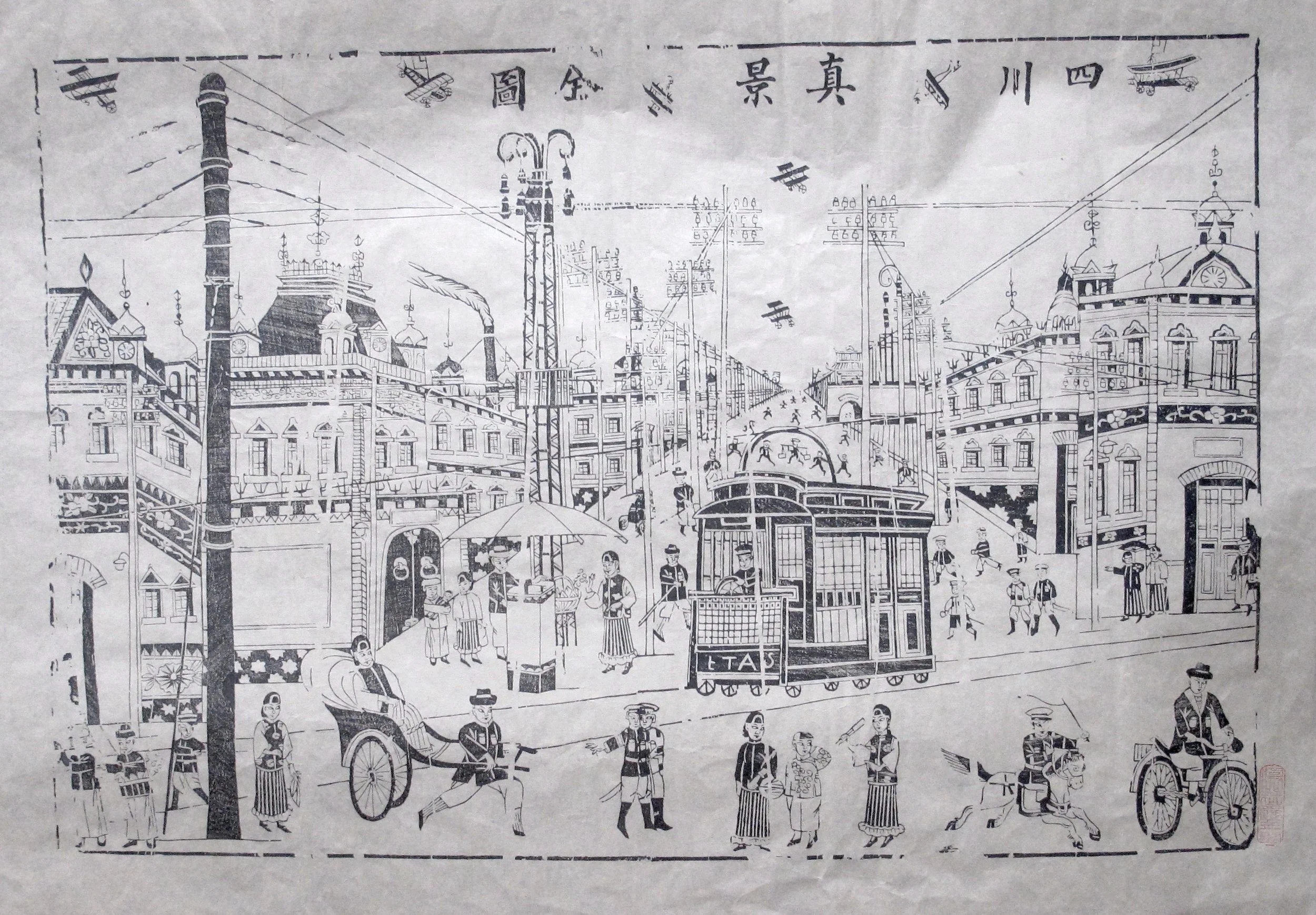A True View of Sichuan (Road) 四川真景全图
Back in March 2019 I made quick trips to the Chinese woodblock printing centres of Zhuxian (Henan), Wuqiang (Hebei) and Foshan (Guangdong), partly to get some idea of the current state of this folk art. Of course I took the opportunity to stock up on prints too…
Asking at a shop outside the Wuqiang Woodblock Printing Museum if they had any old designs, was amazed when they pulled this one out of the cupboard, titled “A True and Complete View of Sichuan”. The print itself is not that old – 1990s – but it’s made from an early twentieth-century block, and even these reprints are rare.
China went through many social and economic upheavals through the nineteenth century, not least in the struggle between conservative and progressive factions at court over modernising the country. The progressives finally won – in 1912 the emperor abdicated and the Chinese Republic was founded – and this print shows many of the new wonders introduced from overseas: telegraphs, trams, bicycles, rickshaws, aeroplanes, heavy industry, foreign-influenced architecture and Western-style clothing. Several other prints cataloguing these marvels – including women drilling in the military – were made at Wuqiang.
Though the title appears to set the scene in Sichuan province in southwestern China, it’s actually shorthand for “Sichuan Road”, one of the main streets in Shanghai where you could, presumably, see all these things at once. The streetscape itself, however, is modelled on Tianjin, southwest of Beijing – the French-style black rooftop left of centre is based on Tianjin’s fire-station watchtower, and the city’s bell-tower is down on the right. Tianjin’s tram system began life in 1906, and aeroplanes had made their first appearance in China in 1911 (the aircraft pictured here are Sommer biplanes, as flown at Shanghai that year by French aviator René Vallon).
Tianjin’s own woodblock printing centre, Yangliuqing, produced an earlier print of an almost identical cityscape but without all the modern innovations. There were several Yangliuqing branch studios at Wuqiang, which explains the cross-fertilisation of the designs.
A large print, nearly a metre across. A catalogue says that it was printed at 乔疃村庆顺成画店, the Qingshuncheng print shop at Qiaotuan village (just southwest of Wuqiang).

